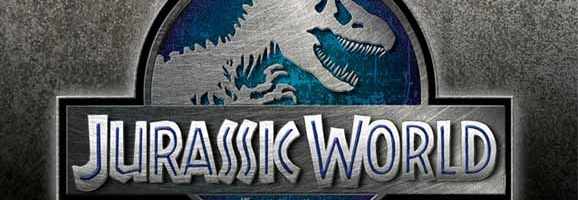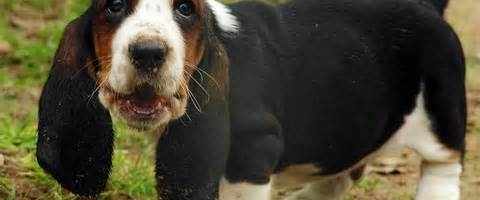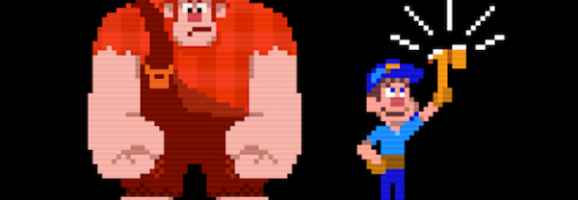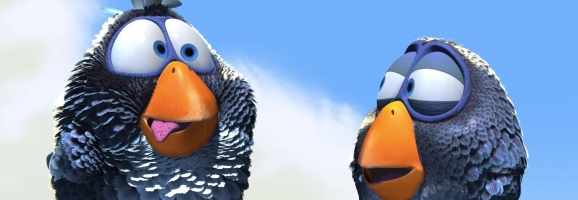Jurassic World: Human Psychology and Animal Behavior
In Jurassic World, Chris Pratt does his best Hans Solo impression as a bike-riding, vest-wearing, raptor-trainer named Owen. Owen was hired by the Navy to train the raptors using operant conditioning strategies to obey commands. Much like six-foot tall toothy puppies, the raptors obey Owen’s click-clicky commands for the rewards he tosses from a safe distance. When Claire needs Owen to apply his animal expertise on a containment problem, Owen is quick to tell her that he doesn’t control the raptors. Training raptors is more about developing trust than manipulating behavior. He tells Claire, “it’s not about control. It’s a relationship, based on respect.”

While Owen is clearly talking about the raptors he trains, the underlying message is much more human. The message is clearly aimed at poor Claire, whom the scriptwriters were clearly intent on shaming as an unfeeling workaholic. Stop trying to control the world you live in, Owen seems to be saying, and remember that relationships are the most important part of your life. Setting aside Jurassic World’s bizarrely old-fashioned gender roles, Owen isn’t the first one to apply what he learned from working with animals to human nature.
It’s not every movie that includes animal training as a major plot point, so this may be a perfect opportunity to talk a little about the psychology of animals. Studying animal behavior is important because even though we may think of ourselves as more complex than animals, we share a lot of psychology with the animal kingdom. Granted, much of what we know about human behavior we learned from studying human behavior, but you may be surprised to learn how of much we know about human behavior, we learned from our furry, feathered, and scaled friends.
Our understanding of human psychology has been informed by animal studies in countless ways. While we’re all thinking about Jurassic World, let me share four human traits that we learned from animals, that that may be new to you!
1. We Learn Helplessness
As expected, there is not a lot of helplessness in Jurassic World. In move-or-get-eaten action sequences, there is no time for defeatism. Outside of the narrative arc of the film, you may have heard of the term “learned helplessness.” Learned helplessness is more than feeling frustrated with a task. After all, we’ve all felt defeated by something that we are trying to accomplish. When someone experienced learned helplessness, the person feels powerless and resigned to failure. Students who feel incapable of succeeding in school may resign themselves to failure and stop trying.

While you may have heard of the phrase, you may not know the origin of learned helplessness. The theory of learning helplessness was developed through animal experimentation 1. Dogs were given painful shocks as they tried to cross a room. The shocks were so painful and the process was so demoralizing that the dogs stopped trying to cross the room, even after the shocks were discontinued. Many of the dogs appeared to give up entirely; they became listless and preferred to lie down, refusing to eat or do their favourite things. Horrible, right? Well, the animal experiments may seem cruel, but they taught us an important lesson: repeated failures can cause dogs (and people!) to learn to be helpless.
2. We Need To Play
In Jurassic World, Claire’s two adolescent nephews represent two very different personality types. The older nephew Zach is complacent, standoffish, and more interested in his cell phone than the spectacular views. On the other hand, the younger nephew Gray is energetic and deeply engaged in the world around him. Gray is a boy who loves to play. As it should be expected, being lighthearted and full of amusement is important for Gray as he moves through the events of the movie.
Play is an important part of development for everyone from the very young to the much older. As children, we learn to socialize through pretend play and throughout our lives we develop our collaboration skills through team play. Of course we have recognized the value of play in our lives throughout history. What we have learned from animals studies is that play may improve our survivability!

Although Charles Darwin recognized the value of play, he didn’t consider it a survival requirement. More recent studies have drawn more deliberate lines between play and longevity. A study of brown bear cub development, Fagen and Fagen 2 found that when they controlled for variables such as cub condition, availability of salmon, and maternal characteristics, cubs who played more during their first summer survived better than cubs who played less. While human children are rarely as susceptible to the peril of the natural world as bear cubs, this study is a reminder of the inherent value of play, especially during formative years.
3. We Have Theory Of Mind
There is a moment in the film when it becomes clear that although the raptors were working with Owen up to this critical point (and I’m trying hard to not spoil the movie for you!), the raptors suddenly have a different perspective. Fortunately for Owen, he is able to recognize the change in the raptors’ position. He was able to recognize that because of something called theory of mind.
Having a “theory of mind” means that you understand that other people have different perspectives. Typically, humans develop a theory of mind around the age of four. Have you ever been nearby when a child had a tantrum because a parent didn’t know what the child wanted? These early social tensions may be because the child doesn’t understand that the parents don’t share the same mindset, perspectives, and opinions. The parents are not being purposely obtrusive, but they don’t share a mind either. You may have heard about theory of mind because it is widely believed that the social problems of people with Autism Spectrum Disorder may be related to an impaired theory of mind 3.

What you may not know is that the theory of mind came from an unlikely place: primate studies. Researchers Premark and Woodruff 4 showed chimpanzees video-recordings of problems (e.g., someone can’t reach food on top of a shelf) and the chimpanzees were asked to choose a card that showed a solution (e.g., use a broom to reach the food). By understanding the problems and choosing appropriate solutions, the chimpanzees demonstrated an awareness of the perspectives of others. This research did more than illustrate the chimpanzees’ remarkable intelligence. Premack and Woodruff’s work also helped us to understand a little more about the human psyche!
4. We Develop Superstitions
As Claire comes into the Jurassic World control room she notices that Lowery, a desk jockey there, is wearing a vintage red-logo Jurassic Park t-shirt. She berates him for wearing the t-shirt, telling him that it’s insensitive to commemorate the tragic events of the original Jurassic Park with something as glib as a souvenir shirt. While her moral position is clearly stated, we can’t help but wonder if Claire’s anger may be bordering on superstition. Perhaps Claire is worried that the t-shirt will be a bad omen that the misfortune of the previous park will somehow repeat at Jurassic World.
In American culture, people may be superstitious about the number 13, black cats, and walking under ladders but superstition has been documented in many societies throughout recorded history. Did you know that animals could be superstitious as well? B. F. Skinner is best known for operant conditioning and is considered by many to be the father of behaviorism. You may know him from your Intro to Psych course as the one with the wide-rim glasses who trained rats to paw pressure plates for food. His work during the 1940s and 1950s was very influential and laid some of the foundation for modern psychology.
In the late 1940s, Skinner published his studies on pigeons and superstition. The pigeon studies were different from previous operant training (e.g., do good, get food) because the food was given at regular intervals regardless of the behavior of the birds. Without a reasonable explanation for the food patterns, pigeons developed superstitious behaviors. The pigeons would repeat whatever behavior earned food the last time. In Skinner’s own words:
“One bird was conditioned to turn counter-clockwise about the cage, making two or three turns between reinforcements. Another repeatedly thrust its head into one of the upper corners of the cage. A third developed a ‘tossing’ reponse, as if placed its head beneath an invisible bar and lifting it repeatedly.” (p. 168) 5

While this behavior may sound strange, I ask you: is the behavior of pigeons any more strange than the behavior of a loyal hockey fan who insists on wearing the unwashed team’s jersey because he was wearing it when his team won the Stanley Cup? The work by Skinner may have been about pigeons, but it may illuminate human behavior as well. When faced with random rewards and unpredictable patterns, it is no wonder we act like pigeons and rely on superstition and bizarre behavior.
The fact that Jurassic World had a huge first weekend release, earning more than 200 million in the first three days, should be no surprise considering the ambition of the CGI sequences. While most of what you’ll remember about the movie will be the last 30 minutes of [SPOILER ALERT] glorious dinosaur-versus-dinosaur violence, take a moment and remember the real stars of the movie: the raptors. Watching Blue, Charlie, Delta, and Echo work together, communicate, and fight together was inspiring. I don’t know about you, but those four raptors made me want to be a better person!
Even though the raptors were created in a special effects lab, they are much like the actually-alive animals who helped us learn so much about ourselves. The raptors were as loyal and human-like as the human characters. In some scenes, I think Blue stole the scene from Pratt. It may not surprise you to learn that this month, lawmakers in Quebec, Canada ruled that animals are sentient and increased the punishments for those who harm them. Considering how much we’ve learned from them about ourselves, I believe it may be a step in the right direction.
Works Cited
- Seligman, M. (1975). Helplessness: On depression, development, and death. San Fransisco, CA: Freeman. ↩
- Fagen, R. & Fagen, J. (2004). Juvenile survival and benefits of play behavior in brown bears, Ursus arctos. Evolutionary Ecology Research, 6, 89-102 ↩
- Baron-Cohen, S., Leslie, A. & Frith, U. (1985). Does the autistic child have a `theory of mind`? Cognition, 21, 37-46. ↩
- Premack, D. & Woodruff, G. (1978). Does the chimpanzee have a ‘theory of mind’? Behavioral and Brain Sciences, 4, 525-526. ↩
- originally published as: Skinner, B.F. (1948). Superstition in the pigeon. Journal of Experimental Psychology, 38, 168-172 ↩
What do you think? Leave a comment.











We also anthropomorphize despite our best attempts to the contrary; the ultimate rapport between Blue and T-Rex was unearned for what amounted to a couple minutes’ tag-teaming between species that had no common means of communicating. It made for a sweet, fuzzy on-screen moment, inasmuch as it affirmed human values like loyalty wrought of collaboration under hardship, but it rings a little false when we look beyond what is comforting for *us* as a human audience. It reminded me of the silly moment of dinosaur “grace” in Tree of Life.
Projecting our own qualities onto others isn’t just something we do to animals but inanimate objects as well. People “talk” to their GPS’s and early users of computerized devices, e.g. CT scanners, like to treat their equipment as fickle co-workers.
Sometimes we do it to our physical selves. Individuals operating in high stress, emotionally, and/or physically taxing work environments such as athletes or investment bankers see their own exhaustion as their body “rebelling” against them and having a “mind” of its own.
This is obviously not to say, computers, machinery, our left quads, and right wrists are sentient, just that we live in an era where people are inclined to see “agency” wherever we are. I imagine if we were the middle ages, we’d see more of God all around us.
As W.I. and D.S. Thomas once observed, things perceived to be real become real in their consequence. They were writing about children but there is no age restriction to its applicability. Not surprising people see their pets as agentic and desire to extend rights to them. No less surprising we want to give them our other qualities as well, whether they want them or not.
Great comment.
Whole movie left me feeling sad. Wasn’t fun, wasn’t scary… just sad.
What was it that instilled that sense of sadness? I ask only because I left with a completely different feeling, and I am curious to know whether I missed something, or if I just gravitated toward different content.
After watching this film I have to admit that it was more enjoyable than I had expected, while it was far from perfect it was most certainly better than movie 2 and 3.
I never saw the idea of Raptors being trained as farfetched. Training a dinosaur seems no different from training a wild tiger, or lion; any animal can be trained in some way.
Really insightful article! I learned a lot and the points were presented clearly and well.
Animal behavioral studies creep me out a little; they’re so often cruel. But we have gained so much knowledge from them… it’s a difficult balance. Also very uncomfortable to many people to consider “training” humans in the same way, even as we acknowledge that people get trained into behaviors all the time.
Thanks for the reply! I also find animal behavior studies difficult to read about at times.
I loved Jurassic World, Colin Trevorrow did a fantastic job taking me back to my childhood and for that I thank him!
I loved this movie, I saw it opening night.
I personally loved the irony pointed out by Jurassic World. Especially in regards to the T-Rex, which displayed parallels with Miami Seaquarium’s orca Lolita, tired and isolated as well as the overall blackfish/captivity debate. They did a great job pointing out the imperfections in greed. And although it’s been 22 years since the original, the morals stand the same.
Exploring the world of dinosaurs seemed to have been exhausted but this movie proved otherwise.
It was fun entertainment and the computer graphics fabulous.
Interesting, well written article! I saw the movie last week and personally loved it but I have a new appreciation for some aspects having read this. I especially was interested in the idea that superstition is something learned from animals as I have never recognized that although it does make sense
Thank you lwiseman! I’m glad you enjoyed it! I also love learning about psychology! I appreciate your note! 🙂
I like your application of psychology to this movie. Obviously, what we really need to discuss next is how on EARTH Claire was able to run in heels.
Ha ha! Bravo. Point to you. 🙂
Great article. Made some really good points
Thanks ehtrisham!
I will say that this is a good movie for kids.
I have yet to see this movie but I had to click because your title completely drew me in. The connections you’ve made above are all great!
MelanieK,
Thank you for the reply! Finding an appropriate title was not easy. It can be challenging to be descriptive and concise.
Thank you for your article! As I was watching Jurassic World, I also thought it was interesting how there were so many characters with different opinions on the raptors – assets, friends, weapons, etc.
These perspectives definitely gave the movie more depth, and was more interesting to think about than just watching dinosaurs running amuck.
Wow, I’m glad to hear it! Thanks for the reply.
Very interesting. I tend to like articles that deal with psychological behavior. Jurassic World was indeed ground-breaking on many levels. Here’s to hoping any sequels they do will be the same.
Each of these things we have in common with animals are simple to understand, but not always the easiest to remember.
Number 2 I think is very important for us to remember even in our adult years because although it is critical to have this during our developmental stages, it can be hard to remember to relax and take time to ourselves when things get busy as we get older.
I also believe that theory of mind is something we need to keep at the forefront of our brains, because it’s easy to forget after a long day of work we all come from different perspectives, from a different day of events.
It was great to learn more about myself as a human being through one of my favourite films, Jurassic Park. Thanks for sharing!
Kathleen,
My pleasure! Thanks for leaving a reply!
It is interesting to note that the relationship between man and animal has long been a recurring theme in the work of “Jurassic World” director Steven Spielberg.
This idea is at first readily apparent in the director’s “Jaws” — the original summer blockbuster — which investigates man’s adversarial relationship with animals. More than three decades later, Spielberg celebrated the rewarding bond between man and animal in the World War I epic “War Horse,” adapted from the long-running Broadway show.
The films in the “Jurassic Park” series certainly fall into this category, but this latest instalment, like its predecessors, are different from other Spielberg films. Beyond studying the link between humanity and the animal kingdom, these films — as this article astutely explains — are more complex than some others in Spielberg’s oeuvre, by which I refer to his body of work prior to his “Schindler’s List”/”Saving Private Ryan” period. “Jurassic Park,” for all its mesmerizing special effects, exposes human frailties and superstitions in a way that “Jaws” does not.
The “Jurassic Park” films, it must be said, also work as a condemnation of greed — best evidenced by the eccentric billionaire played wonderfully by the late Sir Richard Attenborough in the 1993 original. Additionally, the first film and, to a lesser degree its sequels, very much serves as a warning to man that he should not tamper excessively with biology — in the same vein as Mary Shelley’s “Frankenstein.”
JGWilson,
Bravo! Well said.
Great article! Loved the analysis of animal behaviour in the context of the film’s raptors. They’re so cuddly. I want one. I’m sad. 🙁
Thanks brobster!
Enjoyed your article!
Loved the movie, heard that they were doing some more sequels.
Excellent look at the psychological aspects of animal behavior, such as B.F. Skinner’s work. I do feel bad concerning how the movie framed Claire, but it led up to some heart-stirring scenes, such as when Claire and Owen comforted a dying dinosaur.
Regarding Claire worrying about the T-shirt as a bad omen, I think you are reading too much into it. That scene is the metafictional moment to remember the old movie(s) and set distances.